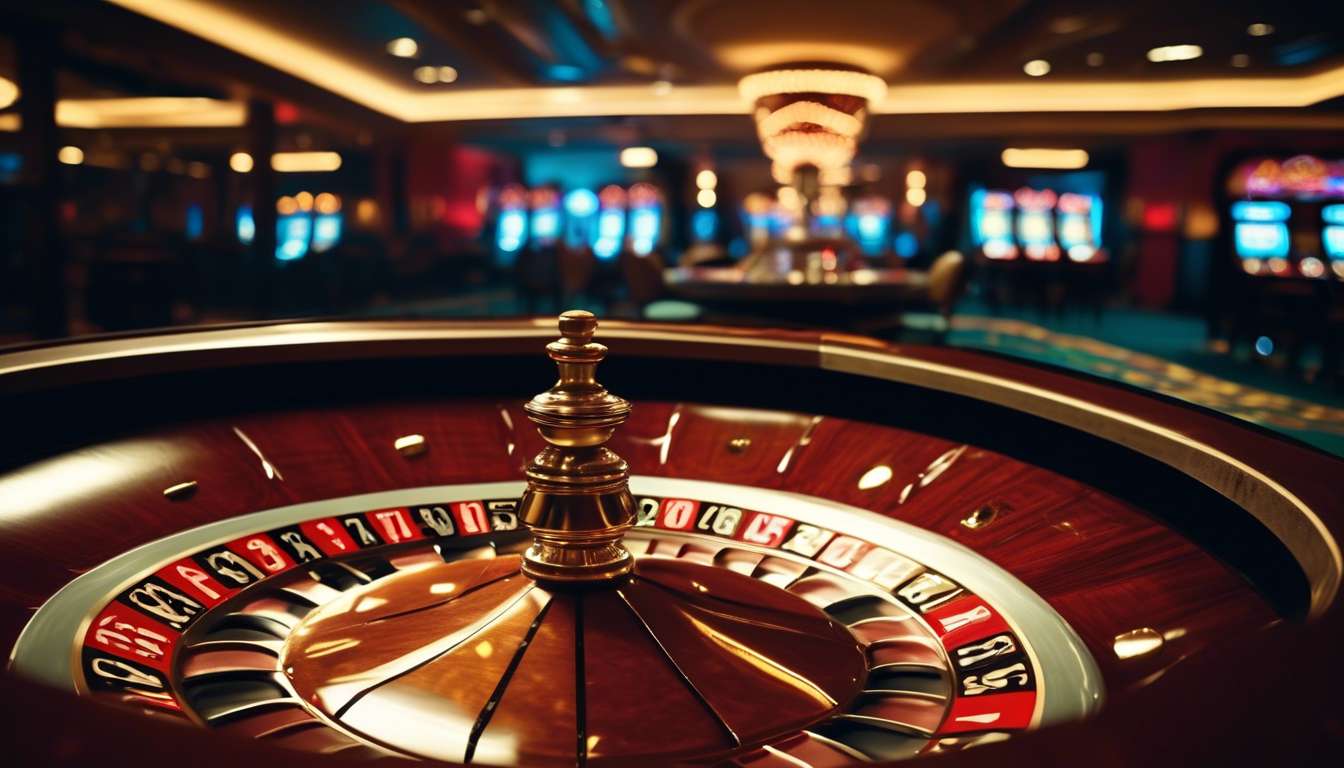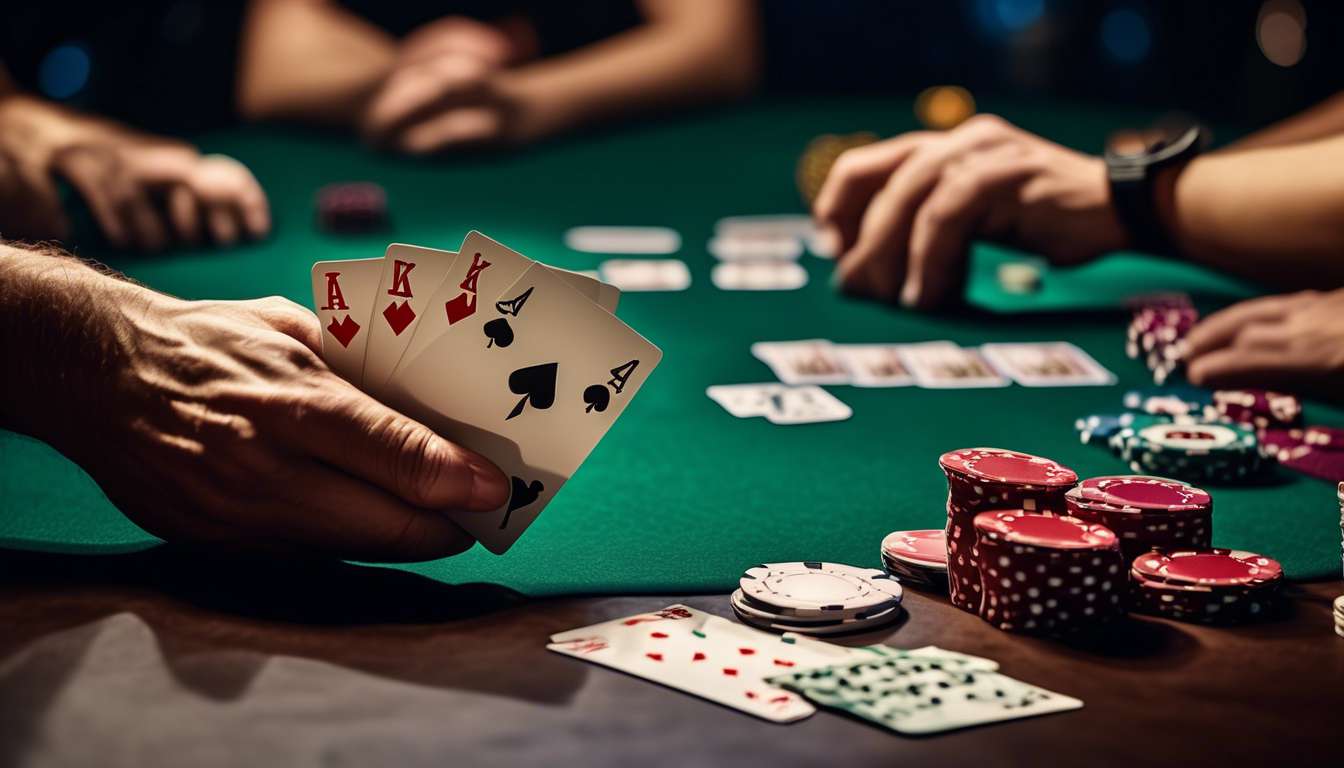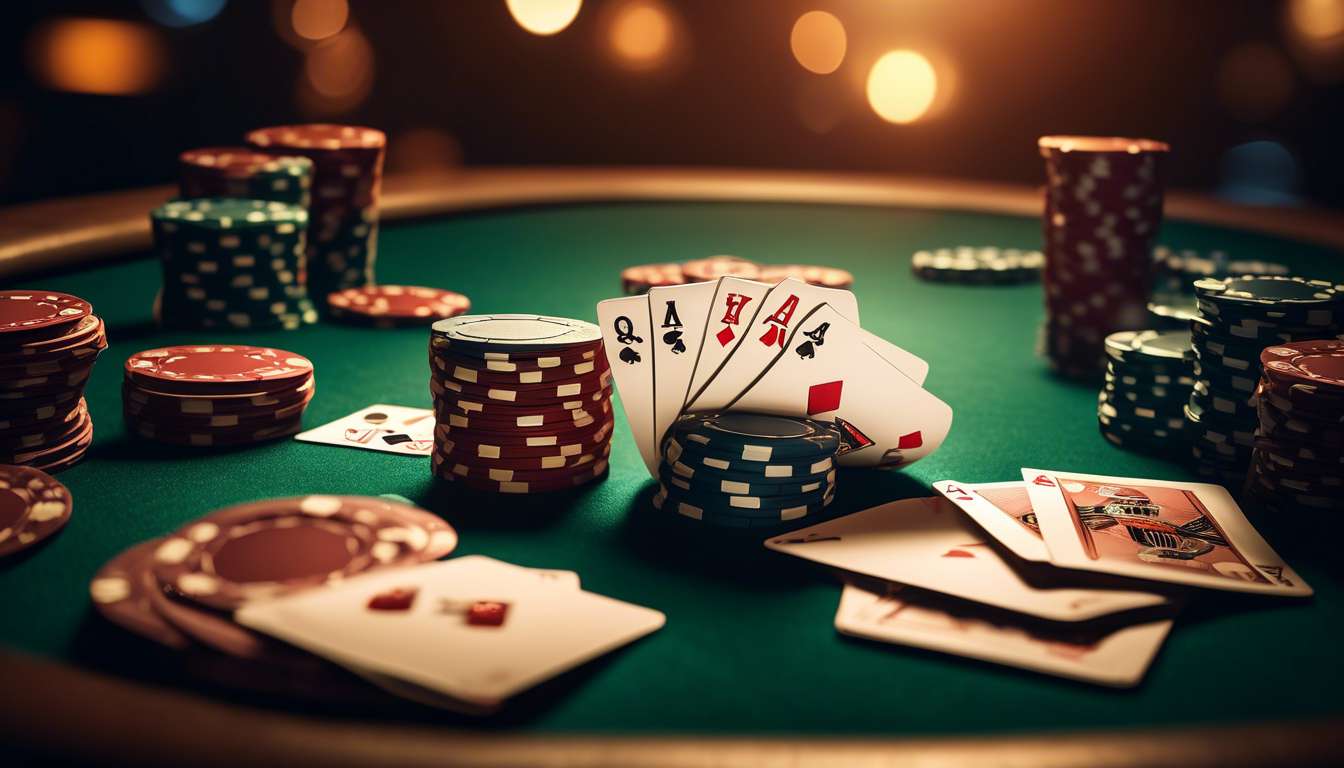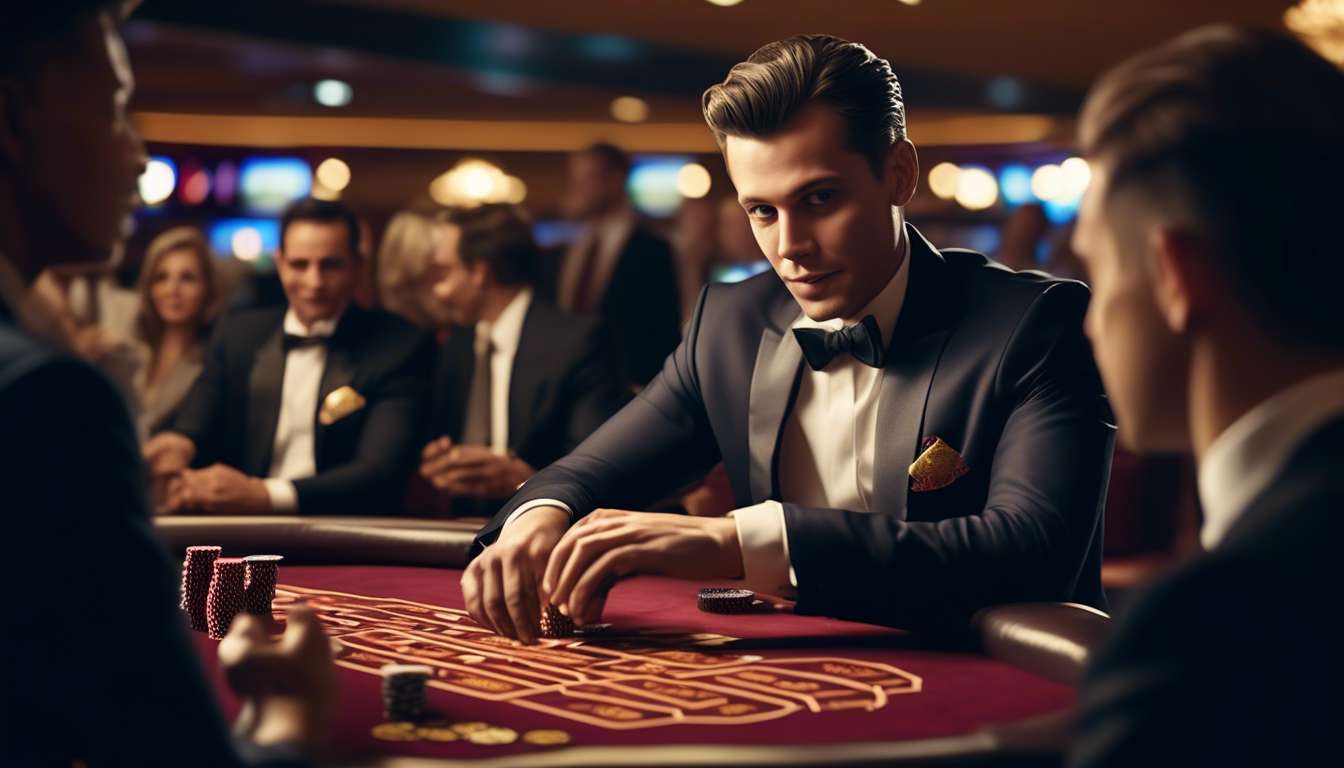The Tantalizing Pull of Near Wins
We have all experienced the tantalizing pull of a nearly winning spin on a slot machine. That moment when the symbols almost align perfectly leaves us just one step away from a jackpot. This feeling is both thrilling and frustrating, and it’s no accident.
The Psychology Behind Near Misses
As we delve into the psychology of these near misses, we uncover how they are expertly designed to keep us hooked. Our collective curiosity drives us to explore why these almost-wins trigger powerful emotions and influence our behavior.
The Illusion of Control
We share an innate human tendency to be drawn into the illusion of control, believing that the next spin might just be the lucky one. This belief fuels our engagement and compels us to keep playing.
Understanding the Phenomenon
By examining the studies and theories surrounding this phenomenon, we aim to understand how these near misses play with our minds. They stimulate us to continue playing despite the odds being against us.
Unraveling the Psychological Mechanisms
Together, let’s unravel the intricate psychological mechanisms at work in the world of slot machines. By doing so, we can better comprehend how these machines are designed to engage players and maintain their interest.
The Allure of Near Wins
The Attraction of Slot Machines
Many of us can’t resist the pull of slot machines, especially when we experience those tantalizing near wins. We feel a rush, almost as if we’ve won, and it’s no surprise this keeps us coming back.
The Role of Dopamine
Near wins trigger the release of dopamine, the feel-good neurotransmitter, which creates a sense of excitement and anticipation. It’s like we’re part of a shared experience, united in the thrill of almost hitting the jackpot.
Cognitive Dissonance in Gambling
We often find ourselves caught in a web of cognitive dissonance, where our beliefs clash with the reality of our losses. We convince ourselves that:
- We’re just one spin away from winning.
- The next try will be different.
This mental gymnastics helps us justify our continued play, keeping us engaged in the game.
The Allure of Near Wins
The allure of near wins taps into our desire for success and inclusion, making us feel like we’re on the brink of belonging to that exclusive group of winners.
Impact on Player Behavior
Near Wins and Behavioral Shifts
When we encounter near wins on slot machines, our behavior shifts as we become more compelled to engage in repeated play. It’s as if these almost-there moments whisper to us, enticing us to stay in the game. We feel a surge of dopamine, the brain’s feel-good chemical, which amplifies our excitement and draws us back for more spins.
Sense of Community
This sense of shared experience—being so close to winning—creates a bond among players, making us feel like we’re part of something bigger, a community striving for that elusive jackpot.
Cognitive Dissonance
However, near wins also introduce cognitive dissonance. We know, rationally, that a near win is still a loss, but emotionally, it feels like a near success. This conflict between our emotions and reasoning makes us more likely to keep playing, as if we’re on the verge of a breakthrough.
Recognizing Influences
By understanding this psychology, we can recognize how these elements influence our actions and foster a sense of connection.
Cognitive Dissonance in Gambling
When we gamble, the tension between our rational understanding and emotional response often creates cognitive dissonance that fuels our desire to continue playing.
We know the odds are against us, yet those near wins keep us hooked, sparking a feeling of almost winning. This sensation, coupled with the release of dopamine, tricks our brains into thinking we’re on the cusp of success, despite the losses piling up.
It’s a shared experience, a collective thrill, that brings us together in pursuit of that elusive jackpot.
In this community of gamblers, we’re united by the same highs and lows. The near wins aren’t just close calls; they’re powerful psychological triggers. They amplify cognitive dissonance, leaving us torn between:
- the logical voice saying to stop
- the emotional voice urging us to try just one more time
We find comfort in knowing others feel the same pull, engaging in a shared journey of risk and reward, as we chase that next big win.
Role of Dopamine Release
Our Brains and Dopamine Rewards
Our brains reward us with a surge of dopamine each time we experience a near win, reinforcing the urge to keep playing. It’s like our brains are sending us a signal: “You’re so close, don’t stop now!”
This rush of dopamine makes us feel good, creating a sense of belonging to the thrilling world of gaming. We become part of something exciting—a community that’s always chasing the next big win.
The Role of Near Wins
Near wins play a unique role in this dynamic. They spark a burst of dopamine similar to actual wins, blurring the line between winning and almost winning.
- This chemical reward system keeps us coming back.
- We are driven by the thrill.
- There is a hope of success just around the corner.
Cognitive Dissonance and the Dopamine Rush
However, the dopamine rush also creates cognitive dissonance. We’re caught between the high of near wins and the reality of loss.
This tension can make it hard to step away, as we’re constantly drawn by the promise of what could be.
Influence on Decision Making
Our decision-making processes are heavily influenced by the allure of potential wins, prompting us to take risks we might otherwise avoid. Slot machines are particularly adept at creating these enticing scenarios, especially through near wins.
When those reels stop just shy of a jackpot, we feel a rush of excitement and disappointment all at once. This emotional cocktail triggers dopamine release, making us crave that winning feeling even more.
We experience cognitive dissonance when faced with near wins, as our minds struggle to reconcile the almost-success with the reality of a loss. This psychological discomfort nudges us toward continuing to play, convincing ourselves that we’re on the brink of a big win. In our quest for belonging within the community of winners, we often overlook the odds stacked against us.
By understanding how near wins manipulate our decision-making, we can better recognize the subtle pressures influencing our gambling choices. This awareness fosters a sense of camaraderie in our shared human experiences.
Reinforcement of Gambling Behavior
Slot machines cleverly reinforce gambling behavior by rewarding us intermittently, keeping us engaged and eager for more.
This intermittent reinforcement becomes even more intriguing when we experience near wins. Near wins, where we almost hit the jackpot, play a crucial role in triggering dopamine release in our brains. This burst of dopamine makes us feel a sense of anticipation and excitement, pushing us to continue playing. It’s almost like we’re part of a community of hopefuls, united by the thrill of the near miss.
Moreover, near wins create cognitive dissonance. We can’t help but wrestle with the conflict between the rational understanding that we didn’t win and the emotional high of getting so close. This dissonance makes us believe that a win is just around the corner, urging us to keep trying.
We share this experience with countless others, feeling connected in our pursuit of the elusive big win, reinforcing our gambling behavior collectively.
Emotional Response to Near Misses
Our emotions surge with a mix of frustration and hope when we experience those tantalizingly close calls on the slot machine. As the reels spin and nearly align, we feel that rush of excitement, almost tasting victory.
These near wins trigger a burst of dopamine, the brain’s "feel-good" chemical, leaving us craving more. It’s a shared moment of anticipation and disappointment that bonds us with fellow players, connecting us through this universal experience.
We find ourselves caught in a loop of cognitive dissonance, where our brains struggle to reconcile the near miss as both a failure and a potential win. It’s this contradiction that keeps us engaged, fueling our desire to keep playing.
We tell ourselves:
- We’re just one spin away from hitting the jackpot.
- Persistence will eventually pay off.
In these moments, the line between frustration and hope blurs, drawing us deeper into the captivating world of slot machines.
Strategies to Combat Near Misses
We can employ several strategies to resist the allure of near misses and maintain control over our gambling habits.
First, recognize near wins for what they are: cleverly designed illusions that trigger dopamine release without delivering a real reward. By understanding this, we can reduce the excitement these almost-victories generate.
Set strict time and money limits before playing:
- Ensure you don’t get carried away by the thrill of the game.
- Share these boundaries with friends to help keep you accountable.
- Foster a sense of community and support by involving others.
Address cognitive dissonance:
- When experiencing near misses, our brains might trick us into believing we’re "almost there" and should keep trying.
- Be aware that each spin is independent of the last, which helps in overcoming this mental conflict.
Engage in group discussions about these experiences to:
- Strengthen your resolve.
- Connect with others who share similar goals.
By adopting these strategies, we can better manage our gambling habits and resist the temptation of near misses.
Conclusion
In conclusion, near misses in slot machines can have a powerful impact on your gambling behavior. The allure of almost winning triggers dopamine release and influences your decision-making, reinforcing your desire to keep playing.
Recognizing the psychology behind near misses and implementing strategies to combat their effects can help you maintain control and make more informed choices when gambling.
Stay mindful of these factors to enhance your gaming experience responsibly.





